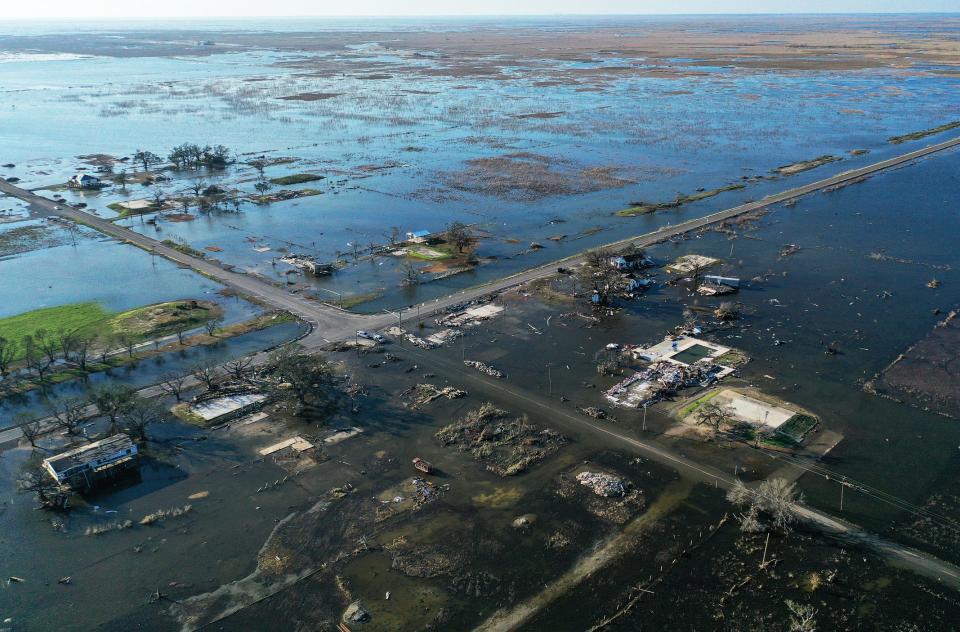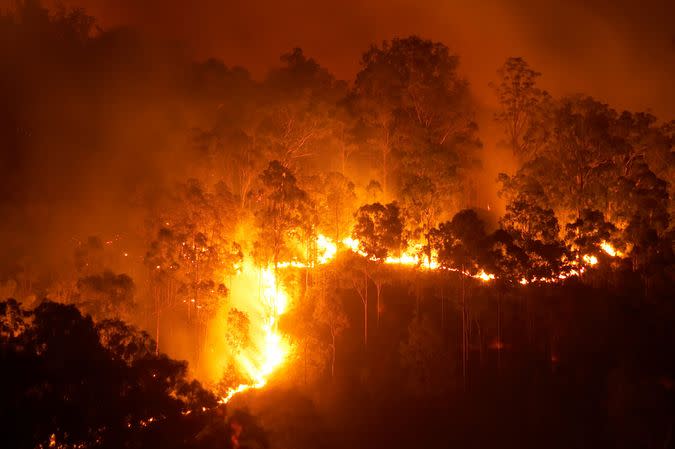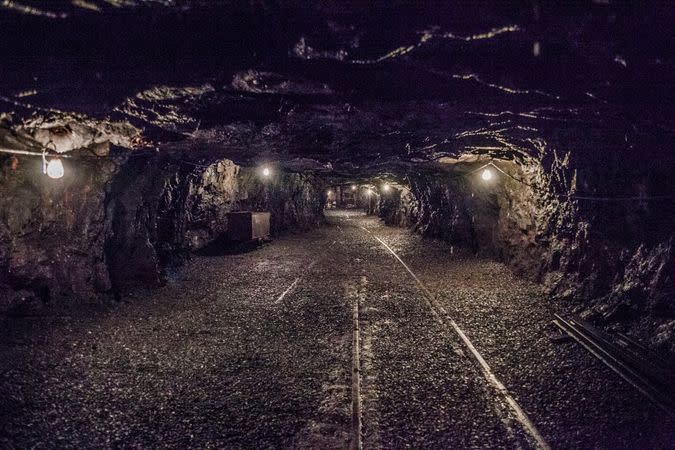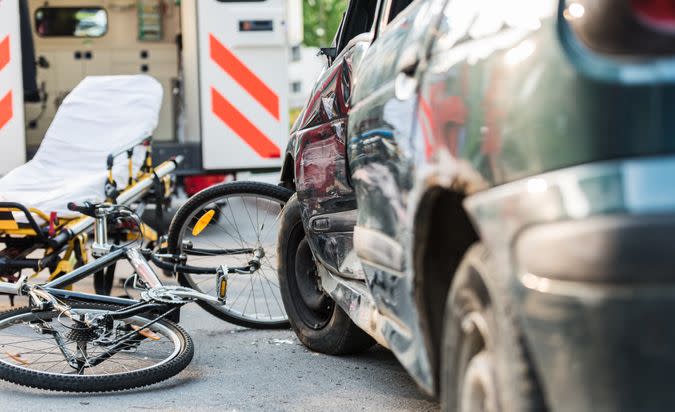10 Programs in the Infrastructure Bill You Might Not Have Heard About

The 2700-page text of the $1 trillion Infrastructure Investment and Jobs Act, unveiled last Sunday by a bipartisan group of senators includes $110 billion for roads, bridges and other major projects; $11 billion in transportation safety programs, $39 billion in transit modernization and improved accessibility and $66 billion in rail investment. But the new bill also includes lesser-known programs: from street safety to wildfires and battery manufacturing to transit stations and the Americans with Disabilities Act, all of which the White House outlined in a fact sheet this week.
See: Sign Up By August 15 to Get Free Health Insurance Through the American Families Stimulus Package
Find: Fourth Stimulus Checks Are Coming From These States — Is Yours on the List?
Weatherization
Two-thirds of low-income U.S. households have high energy burdens, meaning they spend more than 6% of their income on utility bills. The bill will invest $3.5 billion in the Weatherization Assistance Program, reducing energy costs for more than 700,000 low-income households by increasing the energy efficiency of their homes, while ensuring health and safety and creating jobs.

Wildfires
The White House says that 4.5 million homes in the U.S. are at risk of wildfire. The bill invests $8 billion in wildfire risk reduction by providing funding for community wildfire defense grants, mechanical thinning, controlled burns, the Collaborative Forest Restoration Program and firefighting resources.
Floods
The cost of flood damage was approximately $17 billion annually in the last decade and is expected to increase significantly due to climate-related extreme weather and rising sea levels, according to the White House. The bill invests $12 billion in flood mitigation, including funding for FEMA flood mitigation grants, making infrastructure investments to increase coastal resilience, and improving mapping and data so that households and businesses can better protect themselves from future flood events.
Brownfields and superfund
26% of Black Americans and 29% of Hispanic Americans live within 3 miles of a Superfund site, a higher percentage than for Americans overall. Proximity to a Superfund site can lead to elevated levels of lead in children’s blood. The bill invests $5 billion in addressing legacy pollution at these sites, creating good-paying union jobs and advancing economic and environmental justice.

Natural gas wells and coal mines
In thousands of rural and urban communities around the country, hundreds of thousands of former industrial and energy sites, including orphan wells and abandoned mines, are now idle – sources of blight and pollution, the White House says. The bill invests $16 billion in creating good-paying union jobs capping these wells and mines.
Pipeline safety
More than 20,000 miles of cast iron pipelines — much of which was installed in the 1800s and early 1900s — transports natural gas underneath communities in the U.S.
“This infrastructure, which is prone to leaks and fugitive methane emissions, is mostly located in disadvantaged areas including older cities like Philadelphia, Detroit, Baltimore, New York and St. Louis. Since 2010, the U.S. has experienced thousands of pipeline incidents, resulting in hundreds of injuries and deaths, tens of thousands of evacuations, and more than $4 billion in damages,” according to the White House.
The bill includes $1 billion for the “Natural Gas Distribution Infrastructure Safety and Modernization Grant Program” to modernize natural gas distribution pipelines, reducing incidents and fatalities, and avoiding economic losses.
Discover: Gas Price Update: OPEC’s Latest Decision on Oil Production and Your Wallet
Battery manufacturing
Today, the U.S. relies heavily on importing advanced battery components from abroad, exposing the nation to supply chain vulnerabilities that threaten to disrupt the availability and cost of these technologies, as well as the workforce that manufactures them. The bill will invest $6 billion to spur U.S. advanced battery processing, manufacturing, and recycling, creating good-paying jobs and enabling American manufacturers to win the 21st century.

Safe Streets
The White House says that 36,000 Americans died in motor vehicle crashes in 2019, including 6,200 pedestrians and 850 bicyclists. The U.S. has one of the highest traffic fatality rates in the industrialized world, double the rate in Canada and quadruple that in Europe. The bill includes $5 billion for a first-of-its-kind “Safe Streets for All” program to fund state and local “vision zero” plans and other improvements to reduce crashes and fatalities, especially for the most vulnerable of roadways users.
Transit station ADA program
More than 30 years after the passage of the Americans with Disabilities Act, nearly 1,000 transit stations are still not fully accessible, which prevents millions of older Americans and individuals with disabilities from fully enjoying public transit, the White House says.
The bill includes a total of $2 billion for transit ADA, including $1.75 billion for All Stations Accessibility and $250 million for Enhanced Mobility for Seniors and Individuals with Disabilities. These programs will remove barriers to transportation services and expand transportation mobility options for Americans across the country.
See: Crypto Regulation Will Help Pay for Infrastructure Bill, SEC’s Gensler Compares Industry to ‘Wild West’
Find: CDC Extends Eviction Moratorium to October 3 for Most Tenants — Are You One of Them?
Cybersecurity
The recent cybersecurity breaches of federal government data systems, critical infrastructure, and American businesses underscore the importance and urgency of strengthening U.S. cybersecurity capabilities, the White House explains. The bill will invest about $2 billion to modernize and secure federal, state, and local IT and networks; protect critical infrastructure and utilities, and support public or private entities as they respond to and recover from significant cyberattacks and breaches.
More From GOBankingRates
This article originally appeared on GOBankingRates.com: 10 Programs in the Infrastructure Bill You Might Not Have Heard About
